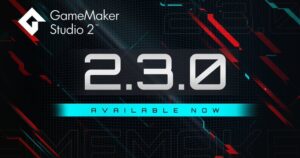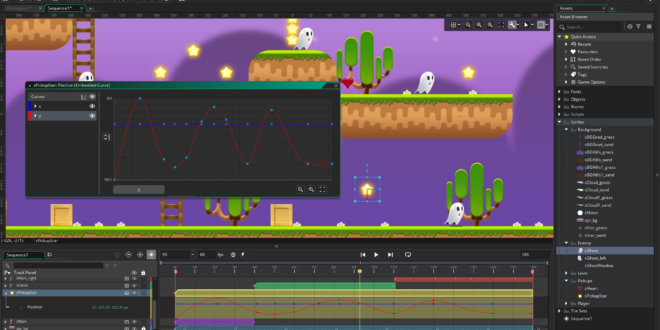Today sees a major and long-awaited update to indie game creation tool GameMaker Studio 2. Version 2.3 is the most significant update to the popular tool since its release.
The update takes the form of a raft of changes and additions to both the GameMaker Language (GML) and Integrated Development Environment (IDE) elements, but it’s the new features designed to make creating games easier and more accessible for those who are more artists than programmers.
 “With version 2.3 of GameMaker we’ve not only changed the best practices for doing almost everything in GML, but with new features like Sequences and Animation Curve we’ve introduced incredibly powerful new tools which continue to open-up GameMaker Studio 2 to people who are less experienced with code and who prefer a more visual approach to making games”, said Stuart Poole, General Manager, YoYo Games.
“With version 2.3 of GameMaker we’ve not only changed the best practices for doing almost everything in GML, but with new features like Sequences and Animation Curve we’ve introduced incredibly powerful new tools which continue to open-up GameMaker Studio 2 to people who are less experienced with code and who prefer a more visual approach to making games”, said Stuart Poole, General Manager, YoYo Games.
“This ability to synchronise audio and animation and invoke instances of it at any point through game logic is going to increasingly add a huge amount of polish to games, by giving content creators a very high level of control over how their designs are implemented within the game.”
One long-touted tool making its full debut is Sequences – an easy-to-use tool for adding sound and animation to visual assets. This can be used in conjunction with another new feature, Animation Curves, “enabling artists to unleash their creativity to create dynamic animations and cut-scenes, all without needing a coder to change every pixel.”
“…to open-up GameMaker Studio 2 to people who are less experienced with code and who prefer a more visual approach to making games”
“Developing cutscenes or complex animations may have been difficult before but has been streamlined tremendously with Sequences. With just a couple of keyframes, I’m able to see my animation come to life immediately and make small adjustments to get it just right,” said version 2.3 closed-beta participate Sam Baylus from MashArcade, adding: “Sequences allow me to work quickly, efficiently, and more intuitively than ever before and developers have only begun to scratch the surface of what Sequences is capable of.”
Developer and closed-beta participant Gurpreet Singh Matharoo was quoted in a statement: “There is so much I like about v2.3, but Sequences outshines them all. There’s so much you can do with them. Animations and cutscenes are the obvious ones, but even GUI design, audio sequencing, template design (for example, pattern of incoming enemies in a space shooter game), and so much more that is yet to be discovered.”
The latest update also sees the Resource Tree replaced with an Asset Browser, in a significant IDE upgrade “which offers developers a completely redesigned way to create, manage, tag and filter their assets.”
Developer JuJu Adams, who has been using version 2.3 during closed-beta, said: “The biggest workflow improvement is ensuring merge conflicts in source control no longer require Bletchley Park to decrypt. That resources can be anywhere is a game-changer for many reasons, not least because you can communicate a lot of information about the underlying structure of a game just through your Asset Browser tree.”
It’s a big update for the software that’s regularly touted as being a great first-stop for budding developers, but which is also powerful enough to have created the likes of Hyper Light Drifter, Wandersong, Katana Zero and many more.

 MCV/DEVELOP News, events, research and jobs from the games industry
MCV/DEVELOP News, events, research and jobs from the games industry




